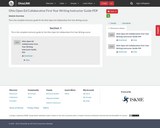
The is the complete instructor guide for the Ohio Open Ed Collaborative First Year Writing course.
- Subject:
- Composition and Rhetoric
- Material Type:
- Module
- Author:
- Anna Bendo
- Date Added:
- 08/21/2019

The is the complete instructor guide for the Ohio Open Ed Collaborative First Year Writing course.
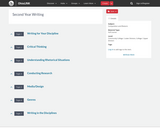
Introductory Writing Course developed through the Ohio Department of Higher Education OER Innovation Grant. The course is part of the Ohio Transfer Module and is also named TME002. This work was completed and the course was posted in September 2018. For more information about credit transfer between Ohio colleges and universities, please visit: transfercredit.ohio.gov.Team LeadRachel Brooks-Pannell Columbus State Community CollegeContent ContributorsCatherine Braun Ohio State UniversityMartin Brick Ohio Dominican UniversityPeter Landino Terra State Community CollegeBrian Leingang Edison State Community CollegeBonnie Proudfoot Hocking CollegeJason Reynolds Southern State Community CollegeMarie Stokes Stark State CollegeLibrarianKatie Foran-Mulcahy University of Cincinnati Clermont CollegeReview TeamAnna Bogen Marion Technical CollegeSteven Mohr Terra State Community CollegeKelsey Squire Ohio Dominican University
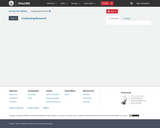
How to Use This GuideThis document is intended to highlight resources that can be used to address the topic of Conducting Research in a Second-Year Writing Course. All resources are Open Access and can be downloaded or added to a Course Management System via hyperlink.IntroductionThis portion of the course is intended to recommend the best open educational resources related to presenting research, including creating a defensible research thesis; supporting and defending ideas in writing; understanding and debating the arguments of others; selecting credible source material to use in a persuasive research essay; avoiding plagiarism; formatting and presenting sources in an approved academic format; and the process of drafting, revising, editing and polishing an academic research paper. These skills will overlap with other learning objectives (e.g. Reading in Academia, Persuasion and Argument, Rhetorical Situations, Genres, etc.), and instructors will likely want to use these resources and design activities in conjunction with other learning objectives. Further, this module assumes that instructors have chosen their own primary readings (academic journal articles, examples of student research papers, editorials) as examples to which the strategies outlined in these resources may be applied.Learning ObjectivesThis module is designed to address the following learning objectives:Select a topic for researchAssess the needs of the audienceCreate a working thesisIdentify types of researchAnalyze and evaluate sourcesUse library databasesAvoid plagiarismParaphrase, summarize and quote from source materialUnderstand documentation types and stylesCreate a working outlineDraft a research paperSeek feedback through peer collaborationUse the revision process to create a formal research-based written document
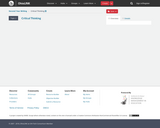
How to Use This GuideThis document is intended to highlight resources that can be used to address the topic of Critical Thinking in a Second-Year Writing Course. All resources are Open Access and can be downloaded or added to a Course Management System via hyperlink.IntroductionCritical Thinking is one of the five main learning outcomes for the Ohio Transfer Module’s Ohio guidelines for second-year writing. The Department of Higher Education recognizes that second-year writing builds on the skills of first-year writing and adds the following skills to what a student should be able to do by the end of the courseFind and evaluate appropriate material from electronic and other sources.Locate, evaluate, organize, and use primary and secondary research material. Secondary research material should be collected from various sources, including journal articles and other scholarly texts found in library databases, other official databases (e.g., federal government databases), and informal electronic networks and internet sources.Analyze and critique sources in their writing.Juxtapose and integrate ideas and arguments from sources.Develop a clear line of argument that incorporates ideas and evidence from sources.Use strategies—such as interpretation, synthesis, response, critique, and design/redesign—to compose texts that integrate the writer’s ideas with those from appropriate sources.The materials below range from introductory lessons to more in-depth and detailed explanations for the various processes in critical thinking that build on the material from first-year writing. Many of the second-year material overlaps with other chapters on Reading and Writing in Academia, Understanding Rhetorical Situations, and Conducting Research. The materials are available as single lessons that can be used to supplement other course material and readings, or as standalone sections that can provide weeks of information and activities that can align with other writing assignments.Learning ObjectivesThis module is designed to address the following learning objectives:Find and evaluate appropriate material from electronic and other sourcesUse library resources to locate academic sourcesIdentify appropriate and credible websites and online articles Analyze and critique sources in their writingApply the rhetorical situationExamine the logicJuxtapose and integrate ideas and arguments from sources throughSummaryParaphraseQuotationSynthesisDevelop a clear line of argument that incorporates ideas and evidence from sourcesProvide appropriate support and evidence for claimsIncorporate opposing viewpointsProvide counterarguments

IntroductionThis portion of the course is simply to provide explanation, examples, and samples of Genres or Rhetorical Modes of writing students might be assigned in First- and Second-Year Writing courses. This module assumes that instructors will utilize other learning objectives (e.g. Writing as a Process, Collaboration, Grammar and Style, Critical Thinking, Conducting Research, and Understanding Rhetorical Situations, etc.) to teach writing, using this section merely as illustrations of academic genres or rhetorical modes.
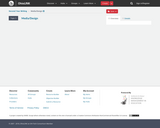
IntroductionBecause college students navigate scores of multimodal texts daily and seem to be constantly composing with media or technological devices, instructors might assume that they are adept at thinking critically about such texts. However, that is not necessarily the case. Teaching students to think critically, analytically, and rhetorically about multimodal texts is crucial to their development as writers in a communication landscape that requires sophisticated digital media and information literacy skills to navigate successfully.This module recommends texts that align with learning objectives focused on analyzing and composing with multimodal resources. Many of the suggested readings and activities described in the other modules of this guide can be applied to multimodal texts (e.g., analyzing multimodal texts instead of or alongside of primarily alphabetic texts). This resource suggests additional multimodal-centric resources.
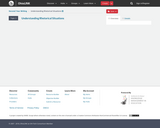
How to Use This GuideThis document is intended to highlight resources available to address the resource goal of Understanding Rhetorical Situations in a Second-Year Writing Course. All resources are Open Access and can be downloaded or added to a Course Management System via hyperlink.IntroductionRhetorical Knowledge is one of the five main learning outcomes for the Ohio Transfer Module’s Ohio guidelines for Second-Year Writing. The Department of Higher Education recognizes that Second-Year Writing builds on the skills of First-Year Writing and adds the following skills to what a student should be able to do by the end of the course:Analyze argumentative strategies and persuasive appeals.Employ appropriate argumentative strategies and persuasive appeals in their writing.This chapter focuses student understanding of rhetorical situations as described by the ODHE guidelines in students’ writing and reading assignments.Second-Year Writing students should have a good understanding of the Rhetorical Situations. As students work on argumentative writing, many of the skills needed for Second-Year Writing start to coalesce or overlap. Some of the material in this chapter duplicates the recommended chapters or exercises from the Critical Thinking chapter, but the material and exercises can be easily adapted to focus the learning objectives from either chapter.This description is intended to apply to a range of Second-Year Writing courses and includes several collaboration activities that can be used in a seated classroom, electronically with the course’s Learning Management System (LMS), or with various Web 2.0 applications. These descriptions and exercises can be integrated regardless of the types of readings chosen for the course, the genres a course may focus on, or the types of written assignments used. This guide is intended to demonstrate items that may be incorporated into both an online or seated section of a Second-Year Writing course. Learning ObjectivesAnalyze argumentative strategies and persuasive appeals for the following:Rhetorical SituationClaimSupport and EvidenceAssumptionsLogic/Logical FallaciesRamifications/Implications

IntroductionThis portion of the course is intended to recommend the best open educational resources for an advanced writing course with a disciplinary theme, whether taught within or outside of an English department. In such an advanced writing course, the disciplinary theme provides context and motivation for instruction in writing, rather than focusing on using writing to explore disciplinary content (which can be extremely useful but is outside the scope of this document).Furthermore, many of the sources from the following portions of this Second-Year Writing Quick Adoption Guide can be used to meet the objectives listed in this section: Media and Design (particularly the section on Reading and Analyzing Multimodal Texts), Reading in Academia, Writing in Academia, Writing as a Process, Critical Thinking, Conducting Research, and Understanding Rhetorical Situations. Learning ObjectivesThis module is designed to address the following learning objectives:Identify typical disciplinary questions in a chosen field and employ or propose appropriate research strategies to address those questionsDetermine the appropriate scope and field-specific methods of inquiry for research questionsCritically evaluate and synthesize information in ways that are appropriate to both the research questions and field expectations/conventionsEmploy strategies to generate ideas, to draft, to get feedback from readers, and to reviseInvestigate and use appropriate communication conventions for a range of genres, contexts, and mediaUse the work of others fairly and appropriately, including using citation practices according to the conventions of the field, genre, and medium